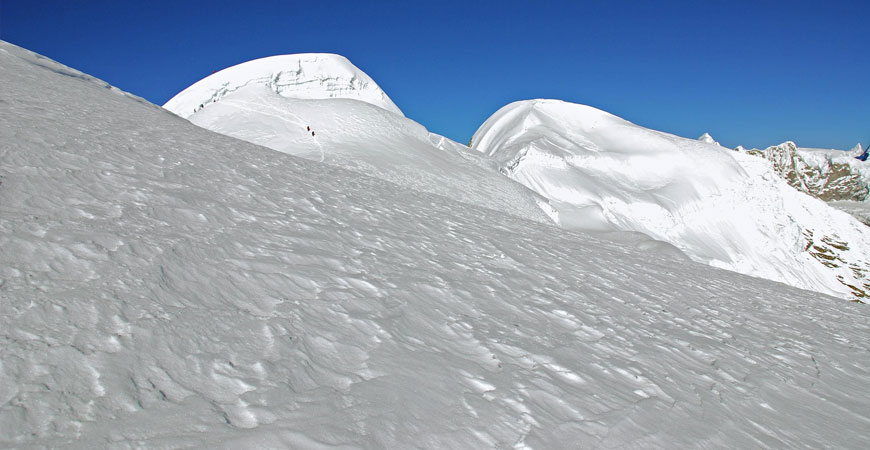Island and Mera Peak with Everest Base Camp
N/A
Per Person
Overview
This Trek starts from Kathmandu with morning flight to Lukla. Mount Everest or Sagarmatha or Chomolongma is the highest mountain on Earth, as measured by the height of its summit above sea level. One of the most popular trips that are carried in Everest region is Everest Base Camp Trek. This Trek will help trekkers to revitalize their adventure spirit. Every Trekker's most popular destination, Everest Base Camp Trek, also known now-a-days as EBC Trek have been trekking destination since the first conquer of Mt. Everest (8848m) till this date. Most of the trek is spent in the Khumbu and Imja Valleys above the altitude of 3000m where the massive peaks of the Eastern Himalayas dominate the skyline. Just be assuring for one of the fantastic adventure of the life. One can enjoy with their Climbing to Island Peak (6173m) and Mera peak (6,421m) after done the Trek of Mt. Everest Base camp. This Trek and peak climbing can be one of the most interesting Trip.
The Fees for Peak Climbing under NMA Permission:
There are various trekking peaks in the Everest, Annapurna and other regions of Nepal. Permits for these trekking peaks can be obtained on the payments.
Group Size 01 to 04 : US $ 350.
Group Size 05 to 08 : US $ 350.- + 40.- per extra person
Group Size 09 to 12 : US $ 510.- + 25.- per extra person
Included/Exclude
Trip Itinerary
Day 1: Arrival Kathmandu Airport & Transfer to Hotel
Day 2: Preparing for next day. O/n at Hotel
Day 3: Fly to Lukla and trek to Phakding (2610m.).
Day 4: Trek Phakding to Namche Bazaar (3440m.)
Day 5: Explore Namche or rest for acclimatization
Day 6: From Namche trek to Thyangboche (3860m.)
Day 7: Trek from Thyangboche to Pheriche (4243m.)
Day 8: Trek from Pheriche to Labuche (4940m.)
Day 9: From Labuche climb to Kala Pattar (5554m.) and back to Labuche.
Day 10: Trek Labuche to Chhukung (4750m.)
Day 11: From Chhukung trek to Island Peak base camp (5600m.)
Day 12: Island Peak BC to High Camp & preparation day.
Day 13: From High Camp climb to the summit(6173m) & back to Chhukung.
Day 14: From Chhukung trek to Pangboche (3985m.)
Day 15: Trek Pangboche to Namche Bazaar.
Day 16: From Namche Bazaar trek to Lukla (2866m.) and free. 2:30 hrs
Day 17: Lukla to Chutanga 2835m. O/N at Camp
Day 18: Trek Chutanga to Chhetrawa (4155m.)
Day 19: From Chhetrawa trek to Kothe (3555m.)
Day 20: From Kothe trek to Thagnag (4175m.)
Day 21: Trek Thagnag to Khare (Mera Base Camp 4690m.).
Day 22: Climb Mera Base Camp to High Camp.
Day 23: Mera Peak climbing period.
Day 24: Mera Peak summit (6,421m.) and back to Base Camp
Day 25: Mera Base Camp to Khare.
Day 26: Trek from Khare to Thagnag.
Day 27: Trek Thagnag to Kothe.
Day 28: Trek Kothe to Chutanga.
Day 29: From Chutanga trek to Lukla & rest in Hotel.
Day 30: Lukla to Kathmandu by flight & transfer at Hotel.
Day 31: Rest and Free day in Kathmandu for shopping or relaxation. Evening Farewell Dinner.
Day 32: Transfer to Airport for final Departure.
Note: This itinerary can be customized as per situation.





